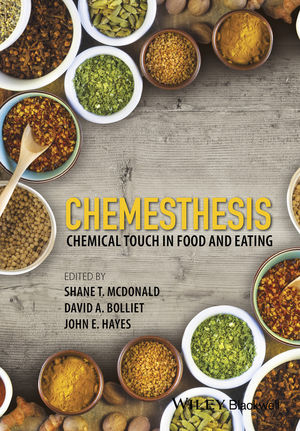
Chemesthesis
Wiley-Blackwell (Verlag)
978-1-118-95173-6 (ISBN)
- Titel z.Zt. nicht lieferbar
- Versandkostenfrei
- Auch auf Rechnung
- Artikel merken
Chemesthesis: Chemical Touch in Food and Eating surveys the modern body of work on chemesthesis, with a variety of contributors who are well known for their expertise on the topic. After a forward by John Prescott and an introduction by Barry Green (who originally coined the term chemesthesis 25 years ago), the book moves on to survey chemesthetic spices and address the psychology and physiology of chemesthesis; practical sensory and instrumental analysis; the interaction of chemesthesis with other chemical senses; health ramifications; and the application of chemesthesis in food. The major types of chemesthesis, including pungency/burning, cooling, tingling, nasal irritation, and numbing, are each covered in their own chapter. The book concludes with a look to the future.
This is the first comprehensive book on chemesthesis since 1990, when Barry Green and his colleagues edited a volume on the perception of chemical irritants, including those in food. This new book is intended to be a vital resource for anyone interested in the sensory impact of the food we eat, including food scientists, sensory professionals, analytical chemists, physiologists, culinary scientists, and others.
Dr Shane T. McDonald, Kalsec Inc., Kalamazoo, MI, USA David A. Bolliet, Kalsec Inc., Kalamazoo, MI, USA. Dr John E. Hayes, Department of Food Science, The Pennsylvania State University, University Park, PA, USA.
List of Contributors xi
Foreword xiii
Preface xvii
1 Introduction: what is chemesthesis? 1
Barry G. Green
2 Psychology of chemesthesis – why would anyone want to be in pain? 8
Pamela Dalton and Nadia Byrnes
3 Spice and herb extracts with chemesthetic effects 32
Howard Haley and Shane T. McDonald
4 Molecular mechanisms underlying the role of TRP channels in chemesthesis 48
Yeranddy A. Alpizar, Thomas Voets, and Karel Talavera
5 Anatomy and physiology of chemesthesis 77
Cecil J. Saunders and Wayne L. Silver
6 Types of chemesthesis I. Pungency and burn: historical perspectives, word usage, and temporal characteristics 92
John E. Hayes
7 Types of chemesthesis II: Cooling 106
Steven Pringle
8 Types of chemesthesis III. Tingling and numbing 134
Christopher T. Simons
9 Interactions in chemesthesis: everything affects everything else 154
Brian Byrne
10 Some like it hot! Sensory analysis of products containing chemesthetic compounds 166
Cindy Ward
11 Analytical chemistry of chemesthetic compounds 185
David A. Bolliet
12 Chemesthesis and health 227
Richard D. Mattes and Mary‐Jon Ludy
13 On food and chemesthesis – food science and culinary perspectives 250
Christopher R. Loss and Ali Bouzari
14 Overview of chemesthesis with a look to the future 268
E. Carstens
Index 286
| Erscheinungsdatum | 22.03.2016 |
|---|---|
| Verlagsort | Hoboken |
| Sprache | englisch |
| Maße | 178 x 252 mm |
| Gewicht | 694 g |
| Themenwelt | Naturwissenschaften ► Chemie |
| Technik ► Lebensmitteltechnologie | |
| Weitere Fachgebiete ► Land- / Forstwirtschaft / Fischerei | |
| ISBN-10 | 1-118-95173-5 / 1118951735 |
| ISBN-13 | 978-1-118-95173-6 / 9781118951736 |
| Zustand | Neuware |
| Haben Sie eine Frage zum Produkt? |
aus dem Bereich


